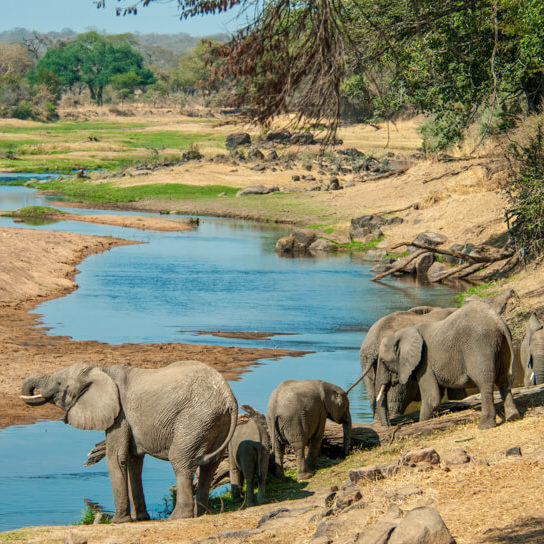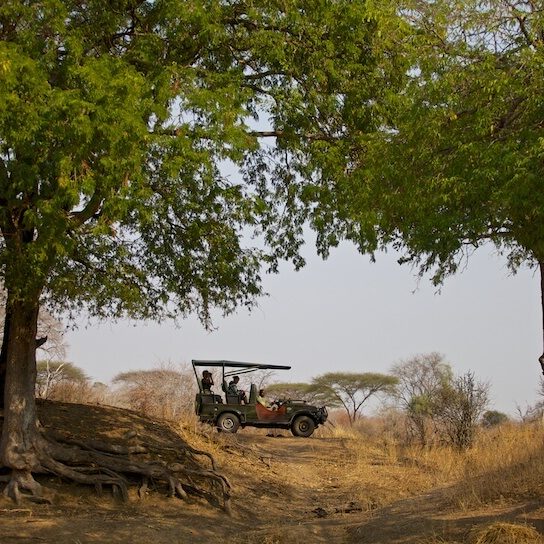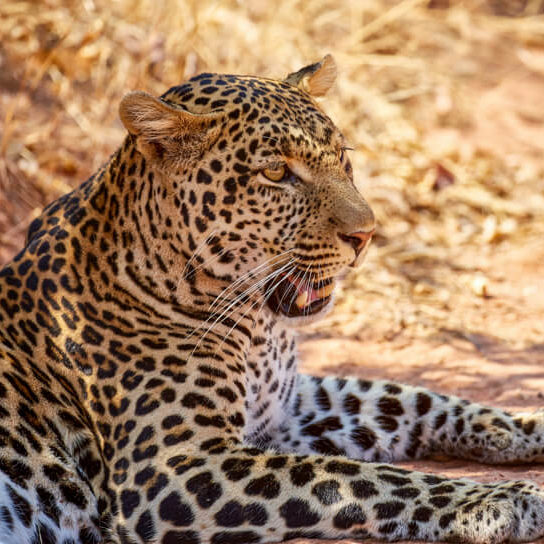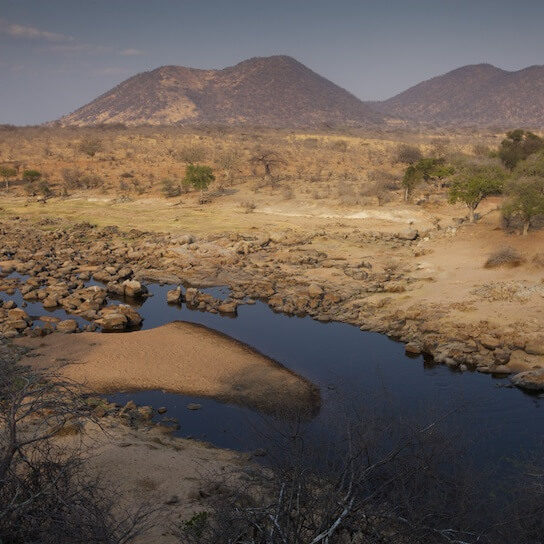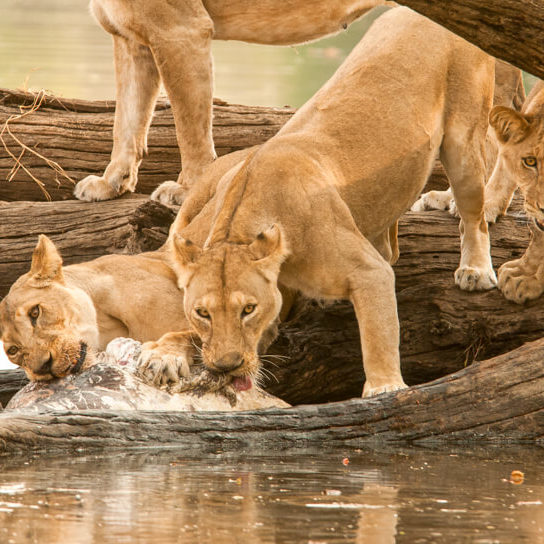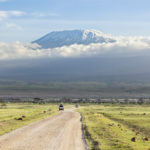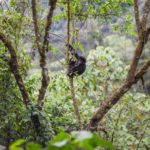Ruaha protects a vast tract of the rugged, semi-arid bush country that characterises central Tanzania. Bordered by the Great Ruaha River, this national park is located in Central Tanzania, 128km west of Iringa, and is the second largest park in Tanzania. It remains relatively under developed and largely undiscovered. It is home to a glorious abundance of game, particularly elephants – of which there are 10,000, the largest population of any East African national park – as well as hippos and crocodiles.
During the dry season, impala, waterbuck and other antelopes risk their life for a sip of life-sustaining water. The risk is considerable: not only from the prides of lion that lord over the savannah, but also from the cheetahs that stalk the open grassland and the leopards that lurk in tangled riverine thickets. This impressive array of large predators is boosted by both striped and spotted hyena, as well as several conspicuous packs of the highly endangered African wild dog.
Ruaha’s unusually high diversity of antelope is a function of its location, which is transitional to the acacia savannah of East Africa and the miombo woodland belt of Southern Africa. Grant’s gazelle and lesser kudu occur here alongside the miombo-associated sable and roan antelope. This park also boasts one of East Africa’s largest populations of greater kudu, distinguished by the male’s magnificent corkscrew horns.
Four hundred and fifty species of birds are evident here, including the crested barbet, yellow-collared lovebird and ashy starling.
During the dry season, impala, waterbuck and other antelopes risk their life for a sip of life-sustaining water. The risk is considerable: not only from the prides of lion that lord over the savannah, but also from the cheetahs that stalk the open grassland and the leopards that lurk in tangled riverine thickets. This impressive array of large predators is boosted by both striped and spotted hyena, as well as several conspicuous packs of the highly endangered African wild dog.
Ruaha’s unusually high diversity of antelope is a function of its location, which is transitional to the acacia savannah of East Africa and the miombo woodland belt of Southern Africa. Grant’s gazelle and lesser kudu occur here alongside the miombo-associated sable and roan antelope. This park also boasts one of East Africa’s largest populations of greater kudu, distinguished by the male’s magnificent corkscrew horns.
Four hundred and fifty species of birds are evident here, including the crested barbet, yellow-collared lovebird and ashy starling.
